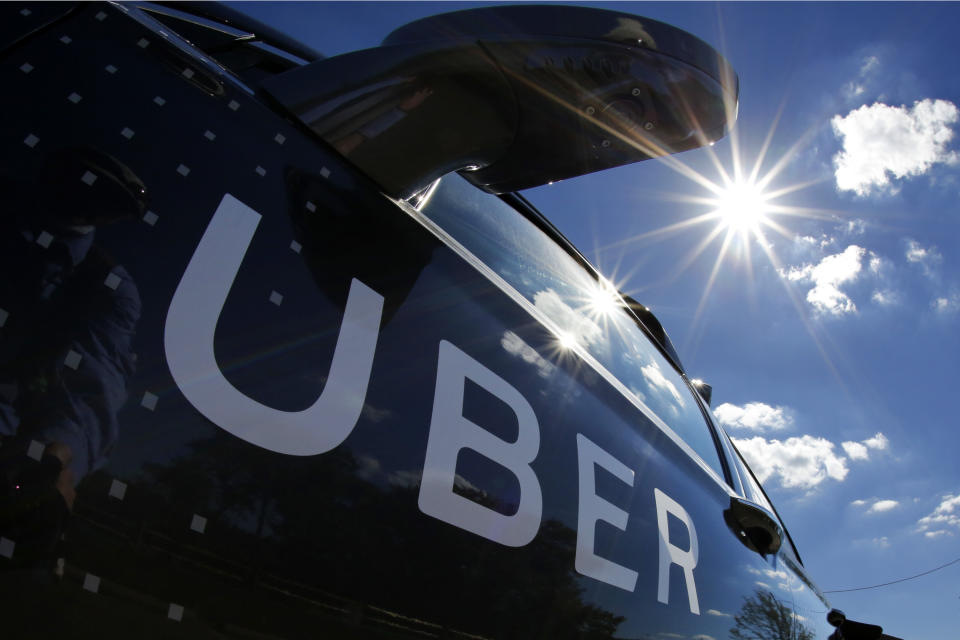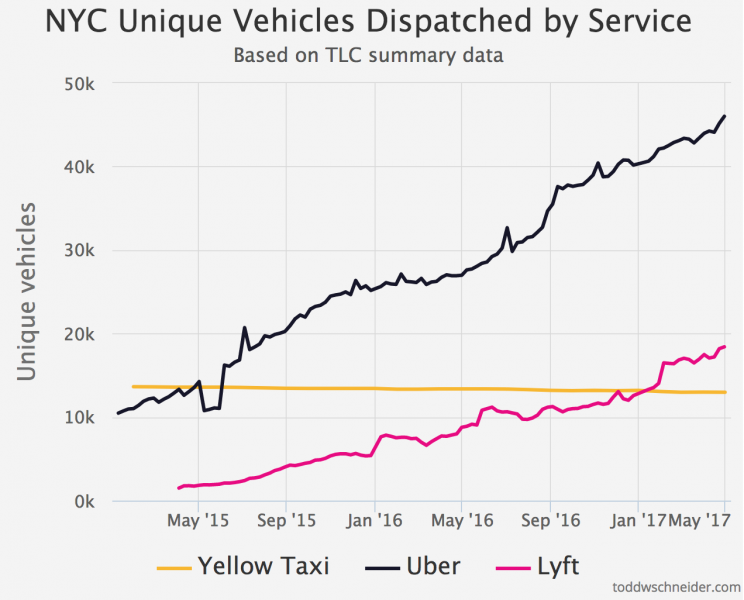Uber's series of scandals has yet to put a dent in ridership
Uber’s culture of masculine-driven toxicity had no better illustration than a moment from Uber’s all-hands meeting, in which the board of directors presented recommendations from former Attorney General Eric Holder’s investigation into the company and announced a leave of absence for founder and CEO Travis Kalanick.

The moment came after board member Arianna Huffington mused on women in leadership positions on the board, now ex-board memberDavid Bonderman made a sexist joke, which Yahoo Finance reported with exclusive audio.
It got worse when Chief HR officer Liane Hornsey made repeated jokes about taking shots.
These moments cut into the overarching theme of culture change and once again bring up the question of whether and how all the scandals will affect the business in the long term. A lot of speculation and opinion has floated around on this point, buoyed by a viral response to each scandal, whether it be flouting regulations or more tales of sexist, bro culture. Something like 200,000 people may have actually #deleteduber, but it’s important to put these numbers in context.
The scandals haven’t mattered much thus far
The public became aware of Uber’s toxic culture at the end of January. Over the next few months the company’s growth trends in New York, its biggest American market, didn’t appear to have changed much if at all. From May 2015 to May 2017, Uber continued to grow and is currently enjoying an all-time high of 291,000 trips per day, according to data from the city’s Taxi and Limousine Commission and charts from data guru and developer Todd Schneider.

Uber trips are approaching to the total number of yellow taxi trips per day, and the gap has narrowed. Though competitors like Lyft have seen growth, perhaps collecting Uber boycotters, Uber is still far above the rest.
From a driver perspective, in terms of cars on the road, Uber has similarly continued to skyrocket in the U.S.’s largest city.

If the scandals thus far haven’t torpedoed Uber’s growth, there seems little reason why it should happen now, considering that the company’s CEO is gone indefinitely and Holder’s recommendations to fix the company culture were accepted unanimously by its board. There would have to be something overtly heinous to provoke a mass exodus. Similar to President Trump saying during his campaign that he could shoot someone in the middle of Fifth Avenue in New York City and still get elected, it seems people have an equally great tolerance of Uber. It would take something awful on a greater scale to affect consumer sentiment in a big way.
Furthermore, the factor that may have made the company so scandal-prone is the same factor that attracts people to it, and fuels indifference now: The service is just really well executed from a rider standpoint. You push a button and a car comes.
Strong consumer enthusiasm for Uber seems to have given the company the courage—or hubris—to flout regulations and even collect dirt on journalists, enabling the manifest-destiny-like aggression that has driven it into scandal. And as the Outline notes, the venture capital industry actually appreciated this “rules-don’t-apply” mindset of aggressive founders.
Uber’s downfall, if it happens, will come from something else
With Uber’s popularity still mostly intact, the issues to watch will be its ongoing legal battle with Google’s self-driving car division, Waymo, its pricing, and its driver relations. Uber’s appeal, in part, is its relative affordability, which comes from pouring a great deal of its own cash to subsidizing rides. It’s not a long-term strategy and eventually either prices must rise or driver pay must rise.
Unless, of course, Uber manages to solve the self-driving car problem, thus fixing its labor issue.
In any event, it’s a wait-and-see game, and Uber still plays a massive advantage. Its name is a verb now, like “google,” and at least in New York City, a massive ridesharing area with very accessible data, the company is orders of magnitude above its next-biggest competitor, Lyft. Much uncertainty still surrounds Uber, but in terms of ridership, it’s doing pretty good.
Ethan Wolff-Mann is a writer at Yahoo Finance focusing on consumer issues, tech, and personal finance. Follow him on Twitter @ewolffmann. Got a tip? Send it to [email protected].
Read More:
Examining Uber’s post-Kalanick future
Leaked audio: Uber’s uncomfortable all-hands meeting
The full list of recommendations on how Uber can improve its workplace
Uber lost 8 executives in under 2 months